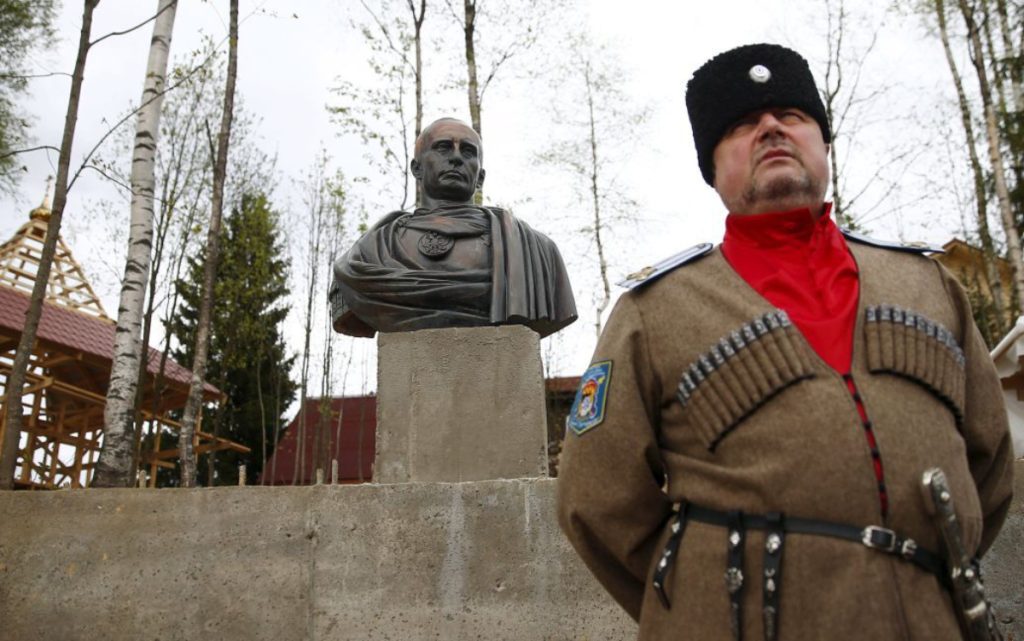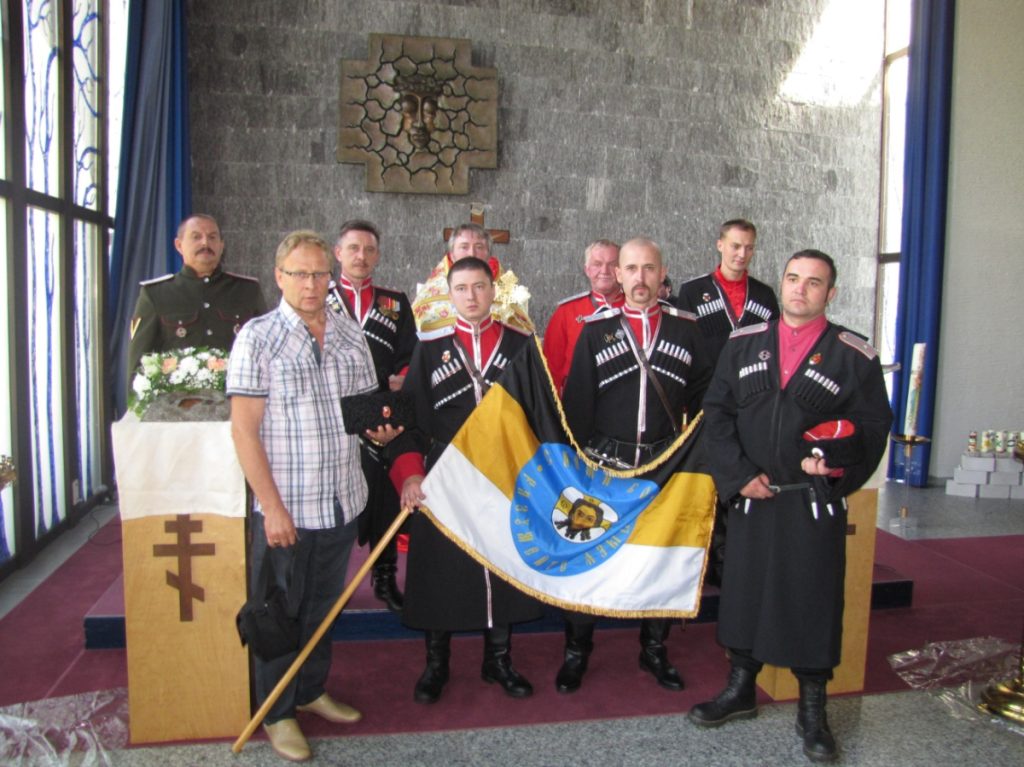In his ordinary life, Alexander Vasilenko, a resident of the Spanish province of Andalusia, is a luxury real estate salesman with an office near Marbella. The exclusive villas in Spain, Greece, Portugal, and Cyprus presented on his website cost several million euros each.
However, several times a month he changes into a theatrical costume, tailored in the latest fashion of the 1920s, and from a respectable realtor turns into a gloomy ataman of the Association of Volga Cossacks in Spain, a representative of the Union of Cossack Warriors of Russia and abroad.
Vasilenko is one of the hundreds of Russian agents of influence who promote Russia’s interests in Europe under the guise of Cossack organizations. So-called Cossacks are one of the underestimated and least studied threats of Russian propaganda to the West.
Under the guise of cultural and patriotic NGOs, paramilitary associations engage in pro-Russian propaganda in major European cities, participate in provocations, and work closely with embassies and “Russian houses.” At the same time, they are headed by people deeply infiltrated into European society who, without a tunic, saber, or papacy, look like average locals.
Putin’s pseudo-Cossacks
From the point of view of a modern, mentally healthy, and educated person, Cossacks in Russia today are participants in costume performances that promote traditional values, strange martial arts, and patriotic education.
In Russia, they are quite serious and at the state level considered almost a separate ethnocultural community that dates back to the times of the Don Cossacks and developed in parallel with the Ukrainian Cossacks, and later became part of monarchist movements and, accordingly, the “white emigration” in Europe.
In Russia, the Cossacks are only gaining in importance every year and are becoming an integral part of not only the propaganda machine but also the security forces. Dressed in a tunic, papacies, and other Cossack elements of clothing, representatives of numerous “Don troops”, “Kuban Hundreds” and other “regiments” and “starts” participate in dispersing rallies, guarding museums, hospitals, churches, schools, as well as in military-patriotic education of Russian youth.

Cossack associations are regular winners of government tenders, as well as recipients of federal and local grants, which are allocated tens of billions of rubles annually. There is a close relationship with the Russian Orthodox Church, which has established a separate Synodal Committee for Cooperation with the Cossacks. Russia also has a network of “Cossack universities” with a military-patriotic bias, which are also funded by the state.
The heads and members of Cossack organizations are State Duma deputies, ministers, and security officials. Atamans of various levels are appointed by Putin personally, according to Russian law. The President has a Council on the Cossacks.
The Cossacks were among the most active assistants to Russia’s special forces in the capture of Crimea in 2014. Various Cossack units are now involved in the war against Ukraine, and their “rear” structures not only raise money and humanitarian aid but also sometimes ensure “law and order” in the temporarily occupied territories.
The international activities of the Cossack network are also coordinated at the state level. The Cossack Council has a separate commission that deals with international cooperation. The main public organization coordinating foreign “activity” is the Union of Cossack Warriors of Russia and Abroad. Most Cossack associations in Europe are structurally affiliated with this Union. The same Union formed the Don unit, which is fighting against Ukraine in Donbas.


Comments are closed.